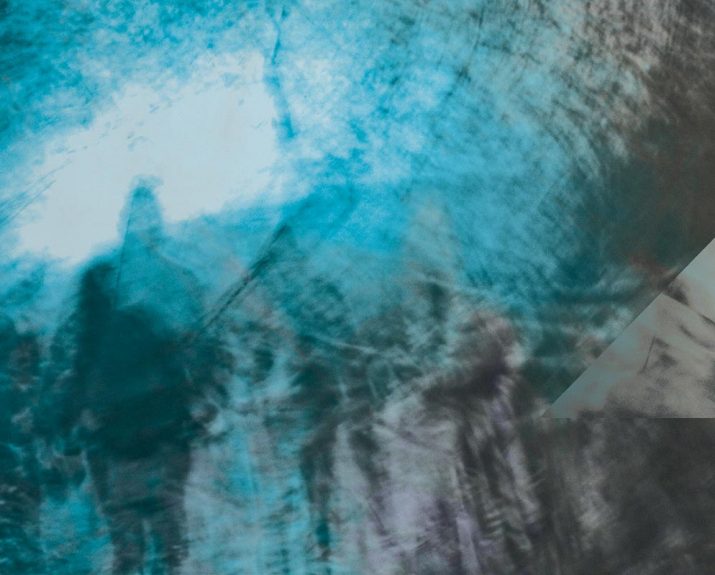
MUSSORGSKY, PROKOFIEV, TCHAIKOVSKY
Modest Petrovich Mussorgsky (1839-1881) composed the prelude “Dawn over the Moscow River” for his folk musical drama Khovanshchina. He diligently gathered a vast amount of information about historical and social events from the turbulent period following the accession of Peter the Great to the throne. The composer died before he finished the mentioned works – Khovanshchina was finished by his friend Rimsky-Korsakov, and Glazunov also worked on the orchestration of “Songs and Dances of Death.”
In composing his Sixth Symphony, Pyotr Ilyich Tchaikovsky (1840-1893) introduced “his whole soul,” as he himself said, and often cried unstoppably during his travels as he thought about his symphony and composed it in his head. His last symphony encompasses both extremes of the emotional spectrum – one moment features a graceful dance, while another is dominated by a dark mood. The form of the symphony is different – the finale is not a boisterous allegro, but rather the opposite: a lengthy adagio. The title “Pathétique” was added by Tchaikovsky’s brother, suggesting pathos in music.
PROGRAM
Modest Petrović Musorgski: Khovanshchina, Prelude
Sergei Sergeyevich Prokofiev: The Love for Three Oranges, March
Pyotr Ilyich Tchaikovsky: Eugene Onegin, Tatiana’s Scene with a Letter from Act 1 – Anamarija Knego
* * *
Pyotr Ilyich Tchaikovsky: Symphony No. 6 in B-minor, op. 74. “Pathétique”
– Adagio – Allegro non troppo
– Allegro con grazia
– Allegro molto vivace
– Finale: Adagio lamentoso
Note: Concert programs will depend on measures to protect against the coronavirus epidemic, which determines the possible or permissible composition of the orchestra.
Author: Philipp von Steinaecker
By the 1890s Tchaikovsky’s homosexuality was an open secret in the upper echelons of Russian society where a doctrine of “don’t ask don’t tell” was generally adhered to. The codex of honour at the Imperial School of Jurisprudence in St.Petersburg, Tchaikovsky’s alma mater, called for suicide as the only possible redemption in case of open homosexuality.
When Tchaikovsky premiered the Pathétique its’ dedication raised all eyebrows. The dedicatee was his nephew Vladimir “Bob” Davydov and was rumoured to be Tchaikovsky’s much younger partner in an incestuous-homosexual love affair. It is hard to imagine that the sophisticated Sankt Petersburg audience didn’t immediately grasp the story Tchaikovsky was trying to convey in his new symphony and accordingly the initial reaction at the premiere was cool. The composer’s death a few days later seemed to confirm what the piece was all about. For his contemporaries it was obvious that Tchaikovsky had taken the consequences that were expected of him and had committed suicide even if the cholera was stated as the official cause of death. They accepted this step as redemtive and the tragic underpinnings that it lend to the symphony together with the fading memory of the scandal’s particularities eventually turned the Pathétique into the most beloved staple of the Russian repertoire.
Later generations, namely Stalin and Hitler tried and to some degree succeeded to re-interpret the symphony as a hero’s song, complete with battle and patriotic death. As a result it comes down to us as a highly charged piece of music with a muddled if ominous meaning.
Even though Tchaikovsky acknowledged and lived his homosexuality as far as possible he was never able to free himself of the moral conventions of his time. The resulting conflict of guilt and passion is the subject of his last symphony. The Pathétique is his testament, a self condemnation, a cry of despair, a monument to the love of his life, a chronique scandaleuse, a farewell and probably a suicide note.
The title Pathétique which the dictionary defines as ‘emotionally moving by evocation of suffering’, alludes to one of the great themes of 19th Century French opera: La grande passion pathétique. The concept is that of ill-faded love out of racial or religious differences that are unbridgeable. Carmen, a work that Tchaikovsky adored, is the most famous example of this, but also Lakmé and Les Hugenottes figure prominently in this context. In his own operas Tchaikovsky adapted the concept of the racial “other” to an often more subtle societal “other”. The gambler Hermann in Pique Dame who throws away happiness to cheat fate, the moral outcast Onegin, who cannot appreciate a place in society even when the lovely Tatjana opens him the door, the blind Iolantha and even Jeanne d’Arc all belong this group of the perpetual “others”. By turning the societal “other” into a specifically homosexual “other” in the Pathétique, Tchaikovsky finally reveals why he identified with these characters all along.
I.
The symphony begins with a brooding and dark introduction: It is Tchaikovsky himself, his general state of mind and soul. Once the Allegro starts the motive is amended by a light and positive second part. This is Bob’s music and together the two ideas form the first theme. The whole first theme complex is structured like a ballet scene, its is mostly bright music and the ballet idea of the lover’s chase comes to mind. The second theme group constitutes a classic idyll of happy love. Formally and emotionally self-contained this passage symbolises seclusion from the world.
Suddenly we are thrown into an infernal development-section: The motives of the two lovers are suddenly reappearing with demonic Dorian-Gray-like grimaces. Screaming wood wind figures are reminiscent of the Witches Sabbath in Berlioz’ Symphonie Fantastique. In Wagner’s Tristan the physical embrace of the lovers is always marked by the music’s arrival on the structural dominant. Tchaikovsky lets this development culminate on just such a dominant pedal over which the trombones call in anguishing fanfares to last judgement. The moral implication are painfully clear: Will the consumption of this love lead to eternal condemnation?
Finally this pandemonium comes to a crushing halt.
The recapitulation takes us back to the lover’s idyll and we realise that the storm only raged in the composer’s mind. But listen to the darkly moving bassline: the terrifying thoughts have left a mark. During the immortal clarinet solo we imagine the lovers drifting off into reverie.
In a solemn Coda we get the uneasy feeling that this will not end well. The brass chorales over descending pizzicato lines have a disquieting inevitability to them. We come across these bass-line scales in every movement usually in the lower brass. In my mind they represent the unstoppable wheel of destiny. For the compulsive gambler Tchaikovsky they might as well be a roulette wheel since fate and gambling are closely associated for him. Here he is saying: They might be happy now. But what must happen is inevitable.
II.
The second movement is a simple and lovely pas de deux in which each of the lovers gets to live out their thematic lines to the full in a grand and ever-evolving dialogue of elegance and beauty. In its’ basic ABA form it is very much conceived in the Ballet convention. It is a waltz of sorts, only: it is in 5/4 time…. Seemingly perfect but different. Or does he mean seemingly perfect yet flawed?
III.
The march functions as a deceptive finale. The triumphant break trough after a long struggle the seeming fulfilment of an aspera-ad-astra-development that the beginning of the symphony suggested. Tchaikovsky was deeply fascinated by all things military, a fervent supporter of Tzar Alexander III, of his pan-slavism as well as, regrettably, his antisemitism. Deeply knowledgeable in the arts and the classics, the homoerotic tensions of battle scenes depicted by Michelangelo, the concept of the combattimento amoroso can’t have been lost on him.
It’s as if the lovers were freeing themselves of convention and of their moral fear to live happily ever after. Seemingly triumphant over an inevitable fate they are saying: Look how happy we are and look how strong we can be, what we could contribute to society if only you would let us be ourselves! But if we listen closely we can hear the opening motive from Beethoven’s Fifth, the call of destiny and even in the most exuberant triumph the brass iterate again those scales of the roulette wheels. Destiny is waiting in the wings…
IV.
As listeners we can barely suppress the urge to applaud after the march, when suddenly into the heavily charged atmosphere crashes an utterly painful Tristan-chord. In Pique Dame when the gambler Herman thinks he has finally cheated destiny, it comes crashing down on him….as it does on the lovers in the Pathétique. This slow last movement is an antipode to the finale of Beethoven’s Nineth and was Mahler’s model for his own grand slow finales.
The theme, intertwined between first and second violins deploys the age-old musical symbol of the cross: The lovers are crucified by the moral convention of society and their own hearts. But the intertwined lines over the Tristan-chord also symbolise a love that can never be undone, a love so impossible that it can only exist in death.
A calm and comforting second theme follows. The lovers call out for each other in close dialogue, growing ever more passionate until the music breaks off in a towering question-mark. The answer that follows just leads us back to the beginning: There is no hope.
In a final parallel to Tristan and to the first movement the music culminates again on the functional dominant in the bass. It is the lover’s final meeting, their last embrace in death. The music storms on until the crushing sounds of stopped horns transform the scene into pain and despair. This is where Tchaikovsky deviates from the Tristan model: Instead of transfiguration there is only darkness and the devastating emptiness of death as the music sinks into oblivion.




